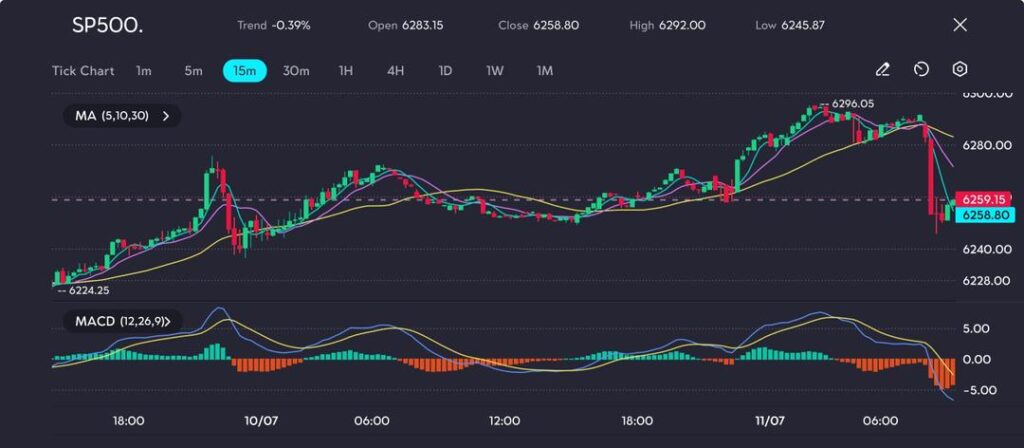US equities pulled back on Friday after President Donald Trump broadened his trade offensive, this time targeting Canada and the European Union. The S&P 500 slipped to 6,258.80 by the close, reversing sharply from its intraday peak of 6,296.05, a drop of 0.39%, as market sentiment turned during the early US session.
The downturn mirrored movements in Nasdaq and EUROSTOXX 50 futures, which fell by 0.4% and 0.6%, respectively. Trump unveiled a 35% tariff on all Canadian imports, effective 1 August, and floated a sweeping 15–20% duty on other trading partners. Reports suggest a formal notice to the EU may be imminent.
Stronger Dollar As Risk Appetite Dims
Currency markets also echoed the shift in sentiment. The euro fell 0.3% to $1.1668, while the US dollar gained 0.4% against the Canadian dollar, rising to C$1.3704. Despite the bold announcement, the reaction was relatively measured as investors assessed whether the 1 August tariff implementation date would be enforced.
Trump had previously issued a short delay earlier in the week. However, analysts, including Joseph Capurso from CBA, remain sceptical that further trade deals can be finalised in time. If not, a substantial tariff hike looms next month, unless another postponement is quietly introduced.
Technical Analysis
The SP500 is retreating after printing a local high at 6296.05, with the index closing at 6258.80, down 0.39% intraday. This sharp drop comes after a steady grind higher throughout the 10th of July, but a late-session selloff triggered a clean break below short-term support near 6270, dragging prices toward the 6250 zone.

The 5- and 10-period moving averages have sharply turned lower, while the 30-period MA is flattening—signalling a potential reversal or deeper pullback if support breaks. The MACD shows strong bearish divergence, with a steep drop in histogram bars and a cross below the signal line. Momentum is clearly fading after the recent rally.
Earnings Season Looms: Will It Reinforce The Rally?
Despite ongoing policy concerns, Wall Street had recently pushed to new records, with Nvidia’s valuation surpassing $4 trillion. Now, however, attention is shifting to second-quarter earnings, beginning with JPMorgan Chase on Tuesday.
Traders will be closely watching whether companies have absorbed or passed on rising input costs linked to the ongoing trade disputes, which began in earnest back on 2 April. This earnings cycle could either validate recent market highs or trigger a correction if forward guidance proves underwhelming.
Create your live VT Markets account and start trading now.







